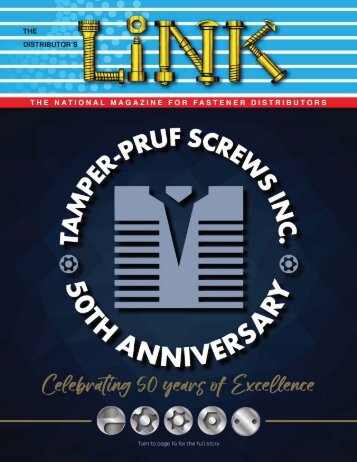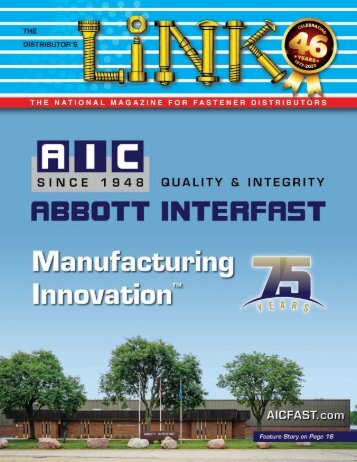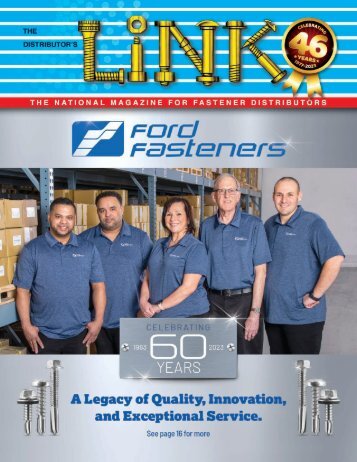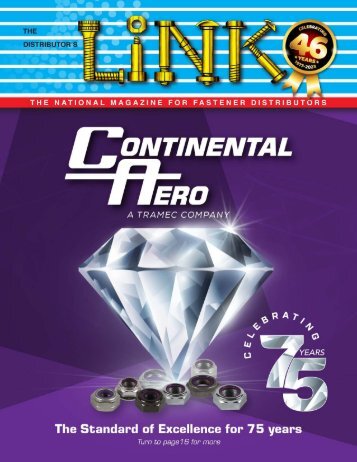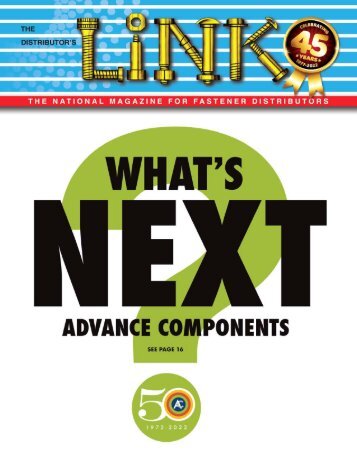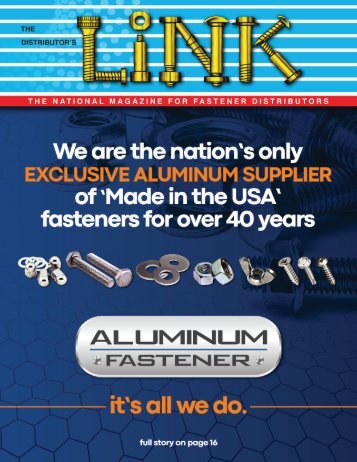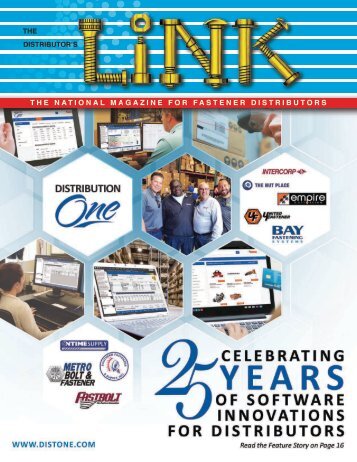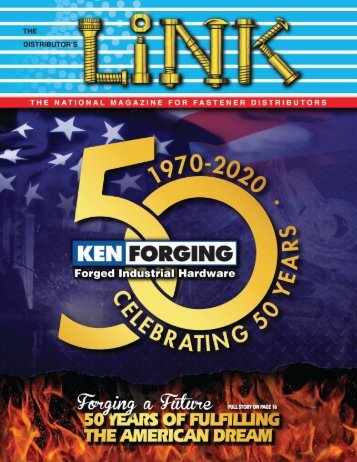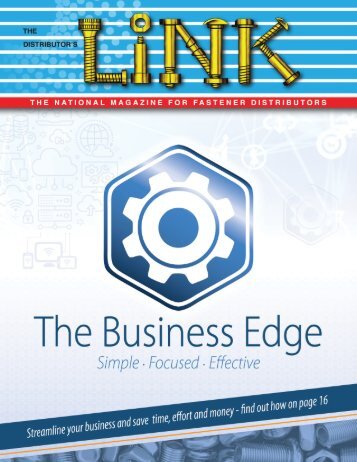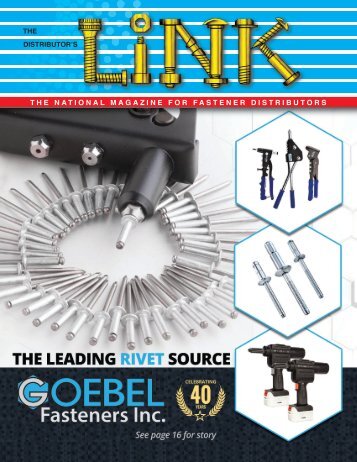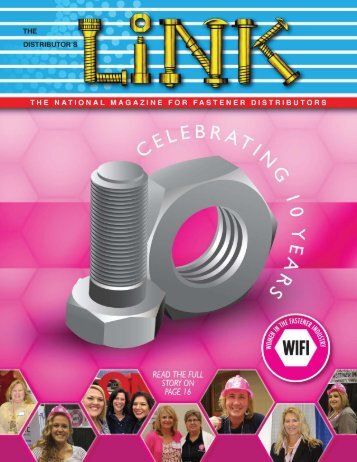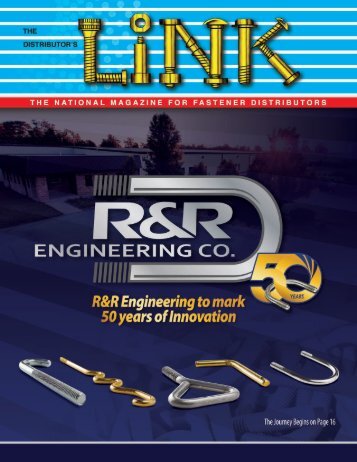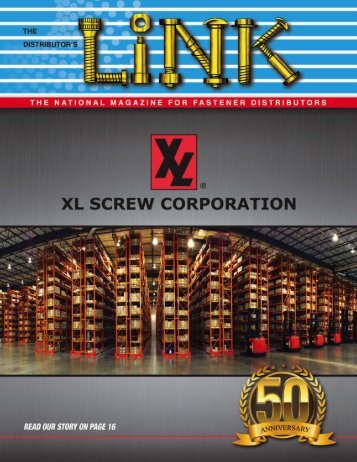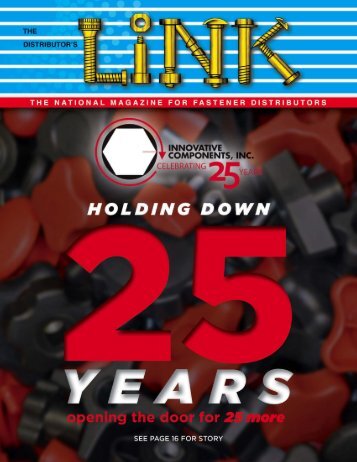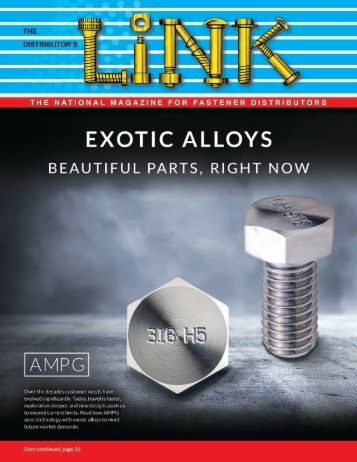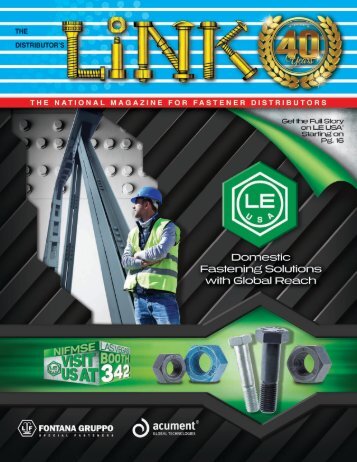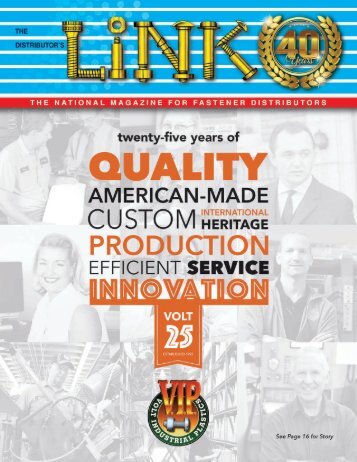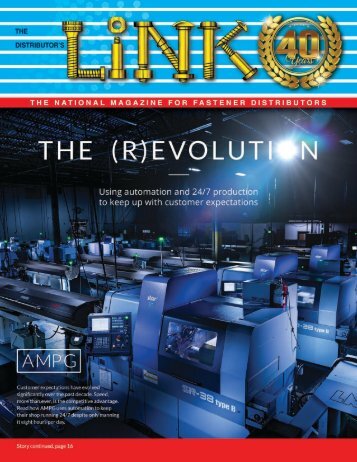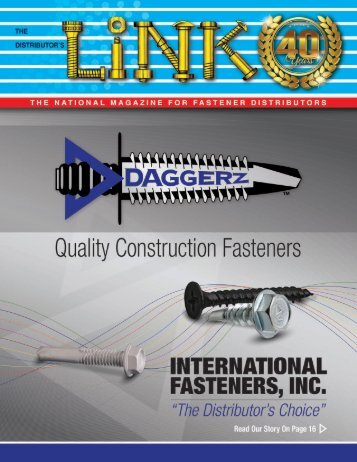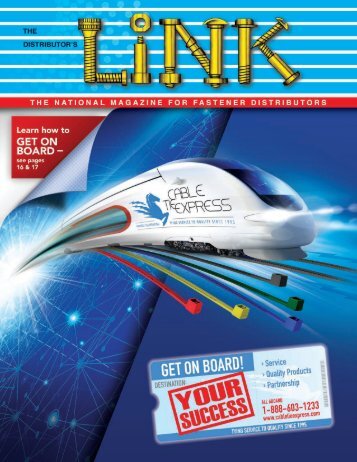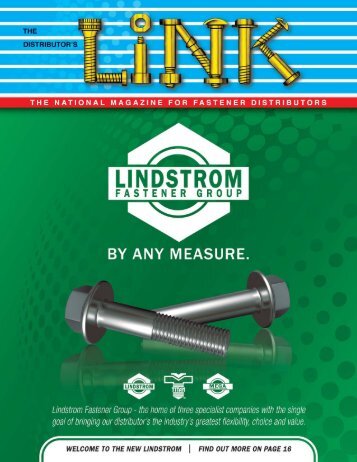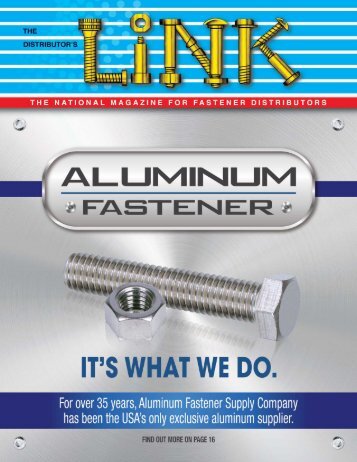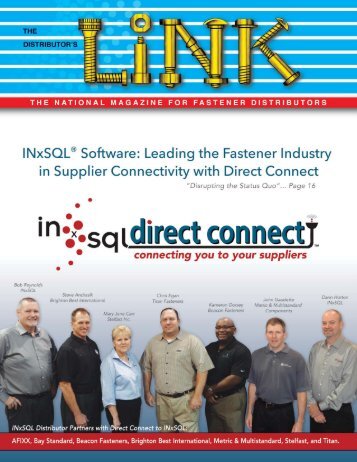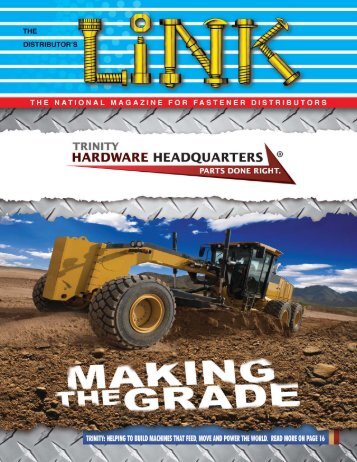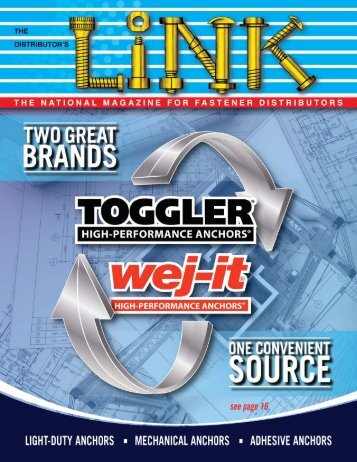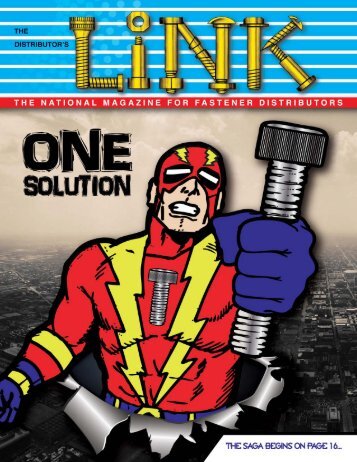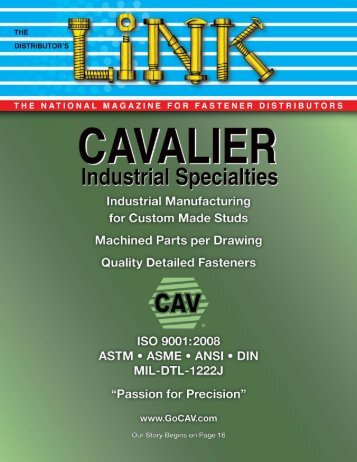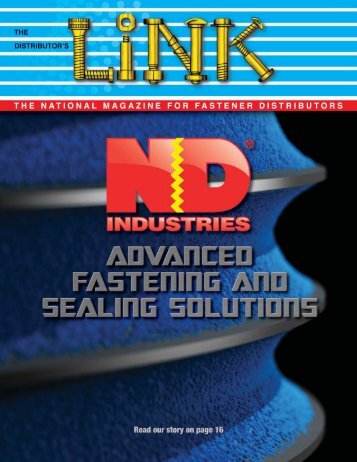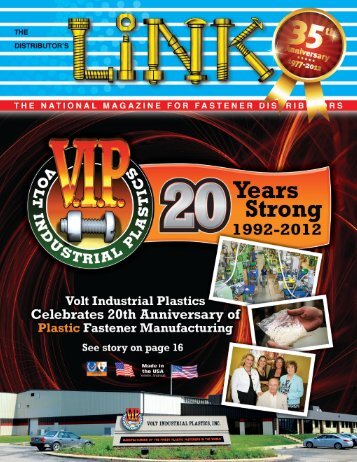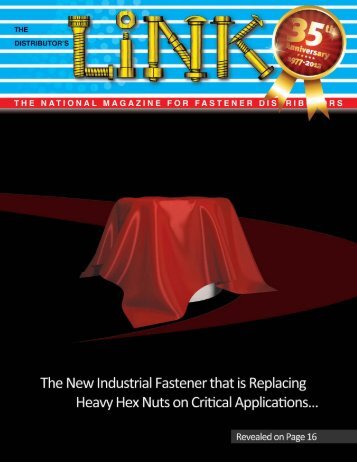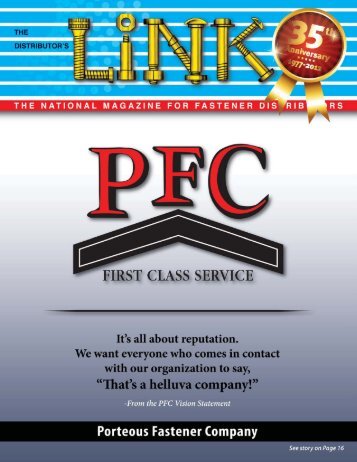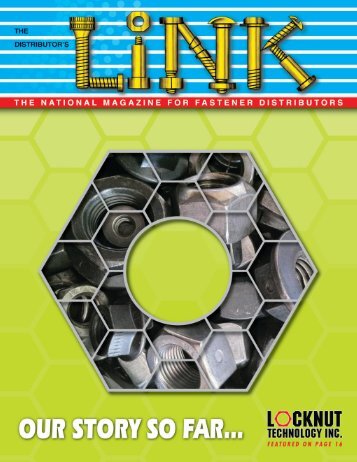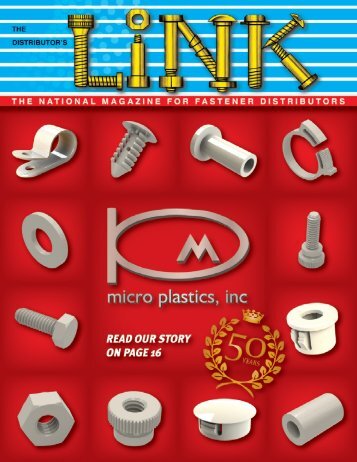FALL 2022
- Text
- Wwwgraphikacreativecom
- Distributors
- Continued
- Manufacturing
- Rivet
- Bolt
- Threaded
- Screws
- Products
- Fasteners
- Fastener
92 THE DISTRIBUTOR’S
92 THE DISTRIBUTOR’S LINK BAY SUPPLY A DIVISION OF BAY FASTENING SYSTEMS 30 Banfi Plaza North, Farmingdale, NY 11735 TEL 516-294-4100 FAX 516-294-3448 EMAIL info@baysupply.com WEB www.baysupply.com KEYS TO EVALUATING THREADED INSERTS FOR PLASTIC By Mike Eichinger Plastics have been part of our lives since the 1950s and have become integral in manufacturing and industrial applications. However, bonding plastics with different plastics or other materials is one particularly challenging aspect of working with plastics. One of the most common and durable techniques for bonding plastic components is with threaded inserts for plastics. Threaded inserts were designed to form a strong bond with soft or thin materials. In addition to threaded inserts for plastics, inserts also are used for light metals and thin substrates. Threaded inserts are made from different materials and have various designs to form a secure anchor for a strong bond. Choosing the correct type of threaded insert for plastic can be difficult. The choice depends on the application, the load the bond must endure, and other variables. The unique characteristics of different plastics make choosing the right insert even more complicated. If you make the wrong choice, the joint is likely to fail. The Basics Of Threaded Insert Design As the name suggests, a threaded insert is a sleeve with a threaded interior. The sleeve has an exterior pattern or flange to hold it securely in place, ensuring it won’t turn. Once the threaded insert is in place, it can accept a bolt, screw, or other threaded fasteners. Threaded inserts can be brass, copper, steel, or even plastic. There are many advantages to using threaded inserts, especially when dealing with plastic workpieces. They are easy to use in an assembly line to make fast, secure joints. The threaded design also makes them ideal for applications in which materials will have to be replaced. For example, using threaded inserts in electronics makes replacing components or circuit boards easier. Threaded inserts continue to grow in popularity because of their versatility, especially for applications in which you need a durable connection. How To Choose The Right Threaded Insert For Plastic There are some fundamental considerations when choosing a threaded insert for plastics. ¤ Consider the type of plastic. There are two commonly used types of plastics. Thermoplastics can be heated and melted, then recast multiple times. Types of thermoplastics include polypropylene, polyethylene, polyvinyl chloride, polystyrene, polyethylene terephthalate, and polycarbonate. Thermoset plastics differ in that they can only be molded once using heat and pressure. TECHNICAL ARTICLE CONTINUED ON PAGE 170
- Page 6 and 7:
in the Fall 2022 issue of 6 DISTRIB
- Page 8:
6 THE DISTRIBUTOR’S LINK On Decem
- Page 12:
10 THE DISTRIBUTOR’S LINK Chris D
- Page 16:
14 THE DISTRIBUTOR’S LINK TEL 323
- Page 30:
28 THE DISTRIBUTOR’S LINK Bruno M
- Page 34:
32 THE DISTRIBUTOR’S LINK NNi TRA
- Page 38:
36 THE DISTRIBUTOR’S LINK INDUSTR
- Page 42:
40 THE DISTRIBUTOR’S LINK Joe Dys
- Page 48: 46 THE DISTRIBUTOR’S LINK BUDD SA
- Page 52 and 53: 50 THE DISTRIBUTOR’S LINK EPCO SA
- Page 54 and 55: 52 THE DISTRIBUTOR’S LINK Larry B
- Page 56 and 57: 54 THE DISTRIBUTOR’S LINK ARAMID
- Page 58: 56 THE DISTRIBUTOR’S LINK Robert
- Page 61 and 62: THE DISTRIBUTOR’S LINK 59
- Page 63 and 64: Sherex Fastening Solutions, a globa
- Page 66 and 67: 64 THE DISTRIBUTOR’S LINK Nelson
- Page 68 and 69: 66 THE DISTRIBUTOR’S LINK Roman B
- Page 70 and 71: 68 THE DISTRIBUTOR’S LINK Carmen
- Page 72 and 73: 70 THE DISTRIBUTOR’S LINK GLOBALF
- Page 74 and 75: 72 THE DISTRIBUTOR’S LINK BRIGHTO
- Page 76: 74 THE DISTRIBUTOR’S LINK SPIROL
- Page 82: 80 THE DISTRIBUTOR’S LINK CHEERS
- Page 86: 84 THE DISTRIBUTOR’S LINK CRESCEN
- Page 89 and 90: THE DISTRIBUTOR’S LINK 87 ...cont
- Page 91 and 92: THE DISTRIBUTOR’S LINK 89
- Page 93: Patriot Bolt, a leading manufacture
- Page 97 and 98: THE DISTRIBUTOR’S LINK 95
- Page 100 and 101: 98 THE DISTRIBUTOR’S LINK Smalley
- Page 102: 100 THE DISTRIBUTOR’S LINK NEW EN
- Page 105 and 106: THE DISTRIBUTOR’S LINK 103 UNICOR
- Page 107: MW COMPONENTS TEL 203-888-2133 EMAI
- Page 111 and 112: DarLoc Corporation of Long Grove, I
- Page 113 and 114: THE DISTRIBUTOR’S LINK 111
- Page 116 and 117: VOLT INDUSTRIAL PLASTICS 30th ANNIV
- Page 118 and 119: 116 THE DISTRIBUTOR’S LINK NATION
- Page 120 and 121: 118 THE DISTRIBUTOR’S LINK LAUREN
- Page 122: 120 THE DISTRIBUTOR’S LINK CHRIS
- Page 125 and 126: THE DISTRIBUTOR’S LINK 123
- Page 127 and 128: THE DISTRIBUTOR’S LINK 125
- Page 130 and 131: 128 THE DISTRIBUTOR’S LINK BRUNO
- Page 132 and 133: 130 THE DISTRIBUTOR’S LINK NNi &
- Page 134 and 135: 132 THE DISTRIBUTOR’S LINK GUY AV
- Page 136: MID-WEST FASTENER ASSOCIATION 40th
- Page 140 and 141: 138 THE DISTRIBUTOR’S LINK JOE DY
- Page 142: 140 THE DISTRIBUTOR’S LINK FCH SO
- Page 145 and 146:
THE DISTRIBUTOR’S LINK 143
- Page 147 and 148:
THE DISTRIBUTOR’S LINK 145 LARRY
- Page 150:
MID-WEST FASTENER ASSOCIATION 40th
- Page 153 and 154:
AFC Industries has acquired Heathfi
- Page 156 and 157:
fastenerlinks THE DEFINITIVE WEB DI
- Page 158 and 159:
fastenerlinks BRINGING YOU THE FAST
- Page 160 and 161:
fastenerlinks BRINGING YOU THE FAST
- Page 162:
160 THE DISTRIBUTOR’S LINK ANTHON
- Page 165 and 166:
VOLT INDUSTRIAL PLASTICS 30th ANNIV
- Page 167 and 168:
THE DISTRIBUTOR’S LINK 165 Tel: 1
- Page 169 and 170:
THE DISTRIBUTOR’S LINK 167
- Page 171 and 172:
THE DISTRIBUTOR’S LINK 169 Earnes
- Page 174 and 175:
172 THE DISTRIBUTOR’S LINK BATCHI
- Page 176 and 177:
174 THE DISTRIBUTOR’S LINK LAUREN
- Page 178:
176 THE DISTRIBUTOR’S LINK CHRIS
- Page 181 and 182:
THE DISTRIBUTOR’S LINK 179 MSC In
- Page 183 and 184:
THE DISTRIBUTOR’S LINK 181
- Page 185 and 186:
MID-WEST FASTENER ASSOCIATION 69th
- Page 187 and 188:
THE DISTRIBUTOR’S LINK 185
- Page 189 and 190:
THE DISTRIBUTOR’S LINK 187 The Me
- Page 191 and 192:
THE DISTRIBUTOR’S LINK 189 ROBERT
- Page 194 and 195:
192 THE DISTRIBUTOR’S LINK MWFA F
- Page 196 and 197:
194 THE DISTRIBUTOR’S LINK LAUREN
- Page 198 and 199:
196 THE DISTRIBUTOR’S LINK ROB La
- Page 200 and 201:
198 THE DISTRIBUTOR’S LINK BRUNO
- Page 202 and 203:
200 THE DISTRIBUTOR’S LINK LAUREN
- Page 204 and 205:
202 THE DISTRIBUTOR’S LINK Patric
- Page 206 and 207:
MID-WEST FASTENER ASSOCIATION SHP B
- Page 208 and 209:
MID-WEST FASTENER ASSOCIATION 69th
- Page 210:
advertisers index A ACS MANUFACTURI
- Page 214:
advertisers index G GF&D SYSTEMS 11
- Page 218:
advertisers index R ROTOR CLIP 31 T
Inappropriate
Loading...
Mail this publication
Loading...
Embed
Loading...
|
SHARE A PAGE FROM THIS MAGAZINE OPTION 1: Click on the share tab above, or OPTION 2: Click on the icon (far right of toolbar) and then click on the icon (far right of toolbar) and then click on the  icon (top right of the page). icon (top right of the page).
|
View Archives
Copyright © Distributor's Link, Inc. All Rights Reserved | Privacy Policy







